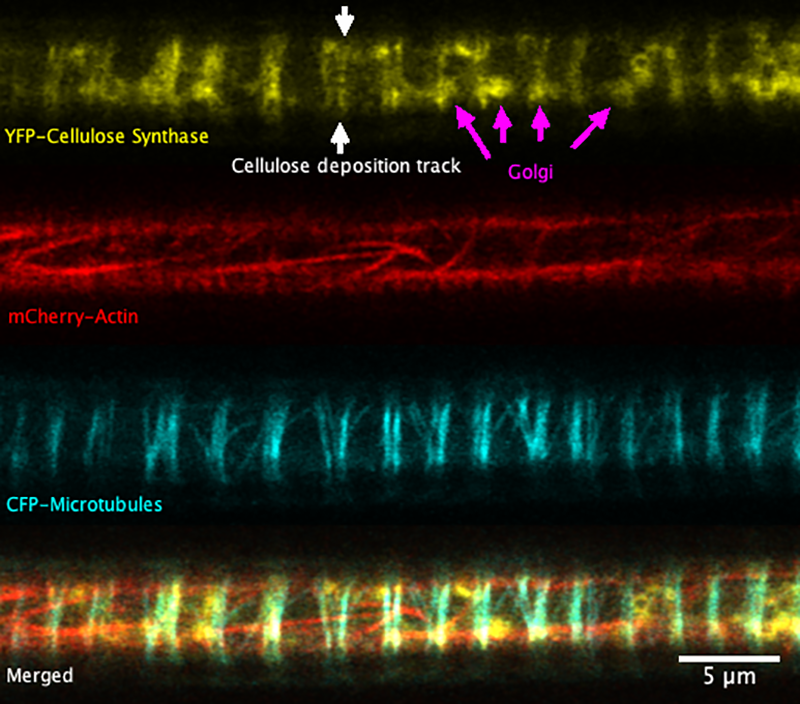Report by Shreya Agarwal
Dr. Raymond Wightman, the Imaging Core Facility Manager at the Sainsbury Laboratory Cambridge University (SLCU), along with other scientists, has found a way to observe the biosynthesis of wood deep inside a living plant. He used optical microscopy as his tool.
Wood is a structural tissue in plants, found beneath the bark in branches and stems of shrubs and trees. It is mainly composed of cellulose and lignin. Cellulose and lignin are organic substances in plants, and the area where they are found gets rough, hard and strong.
Wood forms an integral part of our lives, and is ubiquitously available in most places.

How exactly is wood formed?
The process of wood formation is called xylogenesis. It involves cell division, cell expansion, secondary cell wall deposition, lignification, and programmed cell death.
Let’s start this discussion with an introduction to xylem tissues in plants. Xylem tissues are specialised to transport water and minerals from the roots to other plant plants. The movement in xylem is unidirectional. Xylem tissues form the base of wood production in plants.

Xylem cells grow and form a primary cell wall around them as they grow. Once they reach their final size, they start forming a secondary cell wall around them. This process starts with the deposition of cellulose microfibrils (small fibrils in the cell wall, fibril: small and slender fibers, seen only under the microscope) inside the primary cell wall in 3 layers; S1, S2, S3. S2 consists of 75-80% cellulose in the secondary cell wall and also has the largest influence, when its properties are considered.
These cell walls are made with the help of cellulose synthase (CESA) enzyme complexes, also known as CESA factories. They work near the cell surface and send cellulose out to the cell wall. The CESA factories making the primary and secondary cell walls are just slightly different. Certain substances like xylan ( a wood polymer) are also added to it.
* Synthases: enzymes which catalyse the linking together of two molecules especially without the direct involvement of ATP (adenosine triphosphate, energy units in organisms).
At this time, the cell wall also undergoes lignification. Lignification is the deposition of lignin on the cell wall to make it stronger. At the same time, the cell dies and a woody substance is left behind, which has pores for water to flow through.
Why is this important?
Wood has always been an important material and is still largely used in many industries. In such scenario, it becomes important to deeply understand its physical properties to ameliorate its usage, and for it to meet modern industrial standards.
All the research in this space was earlier dependent upon plant epidermal cells, which scientists developed into artificially wood producing cells. In Wightman’s own words, “No one knew if cellulose synthases were working in the same way in genuine wood-making cells inside stems and roots”.
The functioning of cellulose synthases in the old and new findings is similar. But the new information also brings about certain differences. It was found that the young xylem vessels were long, and thin tubes. Everything inside the cell moved with very high speed around it, along the thick actin (a protein) bundles in it, “like a fast spin in a washing machine”, Wightman adds.
Feature Image credit: www.slcu.cam.ac.uk

